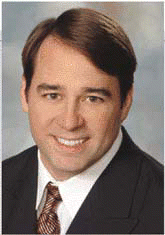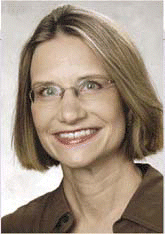Even in patients with relatively common sinus disease, decision making about endoscopic sinus surgery (ESS) can be difficult, and not all cases are the same. This was one of the points brought out in discussion of a series of cases at the Ask the Experts Panel: An Endoscopic Sinus Surgery Potpourri at the annual AAO-HNS conference in Toronto in September. During the panel, five leading sinus surgeons discussed several challenging cases.
Explore This Issue
February 2007Two Teen Cases
The first two cases presented were of teen patients, the first being presented by David Kennedy, MD, Vice Dean for Professional Services at University of Pennsylvania School of Medicine, who also moderated the session.
A 15-year-old male who had failed endoscopic frontal sinusotomy three months previously came to Dr. Kennedy’s clinic. The teen complained of severe frontal headaches, had no major nasal symptoms, but had missed numerous days of school because of the headaches.
The headaches were severe and debilitating, Dr. Kennedy said. But there were no migraine prodromes, and a neurologist couldn’t help. A referring physician believed the headaches were from frontal sinus disease, but a surgeon had been unable to open the frontal sinus.
Based on this amount of information, panelists discussed whether to pursue further endoscopic treatments or opt for more aggressive treatment. Possibilities to consider for disease included migraine, chronic frontal sinusitis, mucocele, meningocele, or tumor, Dr. Kennedy said.
Panelists agreed that further imaging was needed. Dr. Kennedy reported that based on MRI studies an endoscopic treatment was done, after discussion with the patient and his mother about other potential causes of the headache. Surgical findings revealed scarring and mucosal disease in the left anterior ethmoid, with pus in a closed-off area of the frontal sinus.
The anteriorly placed frontal sinus was entered endoscopically with minimal trauma and without the necessity for a drill, and the area stayed open postoperatively, Dr. Kennedy said. The most important aspect of postoperative care in this case was endoscopic debridement and endoscopic follow-up.
However, despite the now patent frontal sinus, and the presence of pus at the time of surgery, the patient’s headaches did not resolve. In this case, it was shown that the cause of the headaches was not sinusitis, as previously believed. Furthermore, a minimally invasive procedure proved to be the best approach.
We avoided doing any harm with a minimally invasive endoscopic approach. If this patient had been approached with an open approach, the subsequent CT changes would have made it impossible to ever know if this had really been the cause of the patient’s headaches, Dr. Kennedy said.
The second teen case was described by Berrylin J. Ferguson, MD, Director of the Division of Sinonasal Disorders and Allergy at the University of Pittsburgh School of Medicine. A 16-year-old girl presented with bilateral nasal blockage that was constant. She had no recurrent infections or facial pain, was a competitive runner, and had no allergies. Nasal steroid sprays didn’t work, although there was mild improvement with topical decongestants.
CT showed bilateral obstruction, which turned out to be concha bullosa.
For this particular case, reduction surgery could be considered a reasonable option. Use your clinical judgment; sometimes the middle turbinate does need to be addressed surgically, Dr. Ferguson said.
Overall, the take-home message is that although concha bullosa are not necessarily a cause of blockage, sometimes you do need to address the concha bullosa to improve the airway, Dr. Ferguson said.
CSF Leak
James N. Palmer, MD, Assistant Professor of Rhinology at the University of Pennsylvania School of Medicine, described the case of a 54-year-old man who presented with nasal polyps and obstruction. A week after surgery for this condition, he complained of severe headache and had an odd clear nasal drainage.
Although it might have been tempting to simply increase the patient’s pain medications because the endoscopic view looked normal, a CT of the sinuses revealed something more serious-a CSF leak-the location of which was pinpointed by use of intrathecal flourescein.
A careful endoscopic exam and biopsy also found that the patient had an inverted papilloma. The papilloma was treated endoscopically using a Draf 3 approach, and the leak was fixed by repairing the skull with fibrin glue.
This case illustrated a number of lessons, Dr. Palmer said. It showed the value of careful endoscopic examination in the office, which can identify disease in places that it would not be normally expected, and that all intranasal lesions of unknown etiology should be biopsied, either in the office or the OR, he said.
In addition, the case showed that intrathecal flourescein can be very helpful in identifying the site of a CSF leak.
Fungal Cases
Peter H. Hwang, MD, Associate Professor at Stanford University, presented the case of a 75-year-old man who presented with purulent rhinorrhea and right maxillary pressure two months after he underwent endoscopic removal of a right maxillary sinus fungus ball. The patient was nonresponsive to 21 days of amoxicillin-clavulanate.
Different scopes revealed different details. Initial endoscopic exam using a 30-degree scope revealed a patent maxillary antrostomy and seemingly normal antral mucosa. However, when a 45-degree rigid scope was used in this case, the remnants of a fungal ball could be seen at the inferiormost aspect of the maxillary sinus. With a flexible scope, the full extent of the remnant fungus could be appreciated, and it was found to extend to the anterior wall of the sinus.
The patient underwent revision maxillary antrostomy and the remaining fungus was removed. The symptoms resolved and the patient was still fungus-free after three months.
The message here is that 45-degree and flexible scopes are the key to diagnosing maxillary sinus pathology in a seemingly normal postsurgical maxillary sinus cavity. Occult disease may lie anteriorly and inferiorly within the sinus, beyond the view of 0-degree or 30-degree scopes, Dr. Hwang said.
Another case where fungus was a factor was presented by James Stankiewicz, MD, Professor and Chair of Otolaryngology-Head and Neck Surgery at the Loyola University Medical Center. Here, a 40-year-old male presented with fungal sinusitis. He had had previous ESS but continued to have significant edema and infection. The patient had failed various sorts of treatments, although there was some success with oral steroids.
A physical exam revealed large, swollen maxillary turbinates (MTs) blocking the ethmoid, frontal and maxillary sinuses. CT showed that the MTs obstructed sinus drainage.
To treat the patient, revision surgery was performed. This was a case in which the middle turbinate needed to be cut back significantly, in part to allow for topical therapy to get in better, Dr. Stankiewicz said. The MTs were cut back significantly.
But panelists agreed that for most patients the middle turbinates shouldn’t be removed-and not just for exposure. There is not always a clear answer and the physcian’s best clinical judgment needs to be used, he said.
Papilloma
Dr. Kennedy presented a case of a 70-year-old man who presented with left-sided nasal congestion with a prior history of endoscopic treatment for multiply recurrent inverted papilloma.
The patient had been informed by doctors overseas that he was free of the tumor, but presented with synchiae between the septum and lateral nasal wall on the left, a small antrostomy and inferior meatal window, plus polyps in the ethmoid sinus.
An office biopsy of the area in the maxillary sinus showed there was persistent papilloma, Dr. Kennedy said. There was also extensive residual tumor present on the medial orbit wall, skull base, supraorbital ethmoid, and maxillary sinus, he said.
A left total sphenoethmoidectomy and sinusotomy were performed, and after a minor revision for frontal sinus stenosis, follow-up visits were clear-until four years later. At this point, the patient returned with a CT report showing some ethmoid disease on the right side, along with mucosal disease in the right frontal sinus and right sphenoid. There was an expansile lesion in the supraorbital ethmoid area with erosion into the orbit.
Panelists discussed whether or not a biopsy should be done, and there was concern about the proximity of the lesion to thick bone that was located inferiorly. MRI helped show that the lesions represented two mucoceles, and despite the thick bone beneath them and their difficult location, these were successfully treated endoscopically, Dr. Kennedy reported.
The case demonstrated the value of MRI in differentiating between a tumor (inverted papilloma) and a mucocele. It also showed that even for a mucocele in a very difficult-to-access location, endoscopic surgery may be a viable option, especially when combined with computer-assisted surgical navigation, Dr. Kennedy said.
©2007 The Triological Society


Leave a Reply